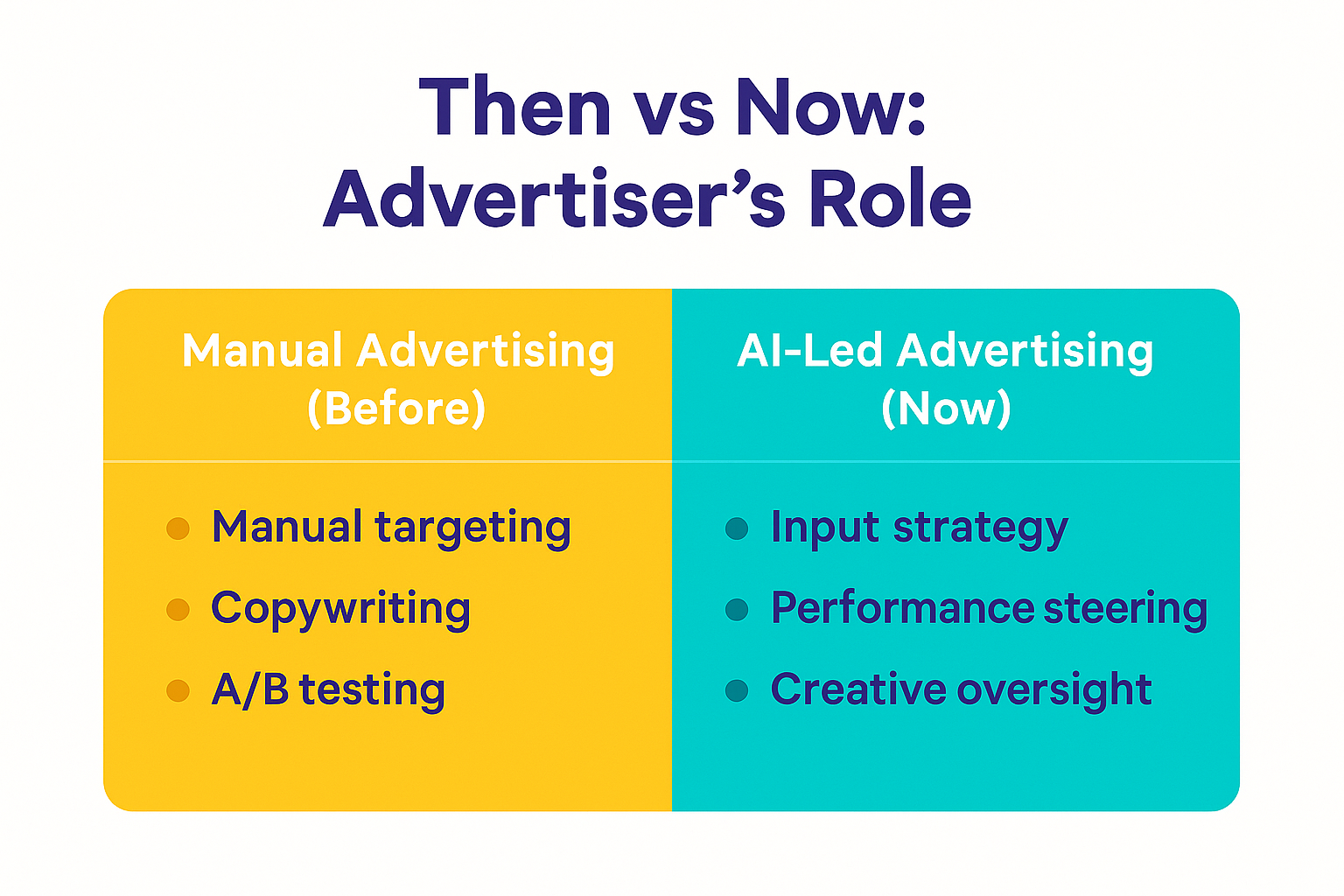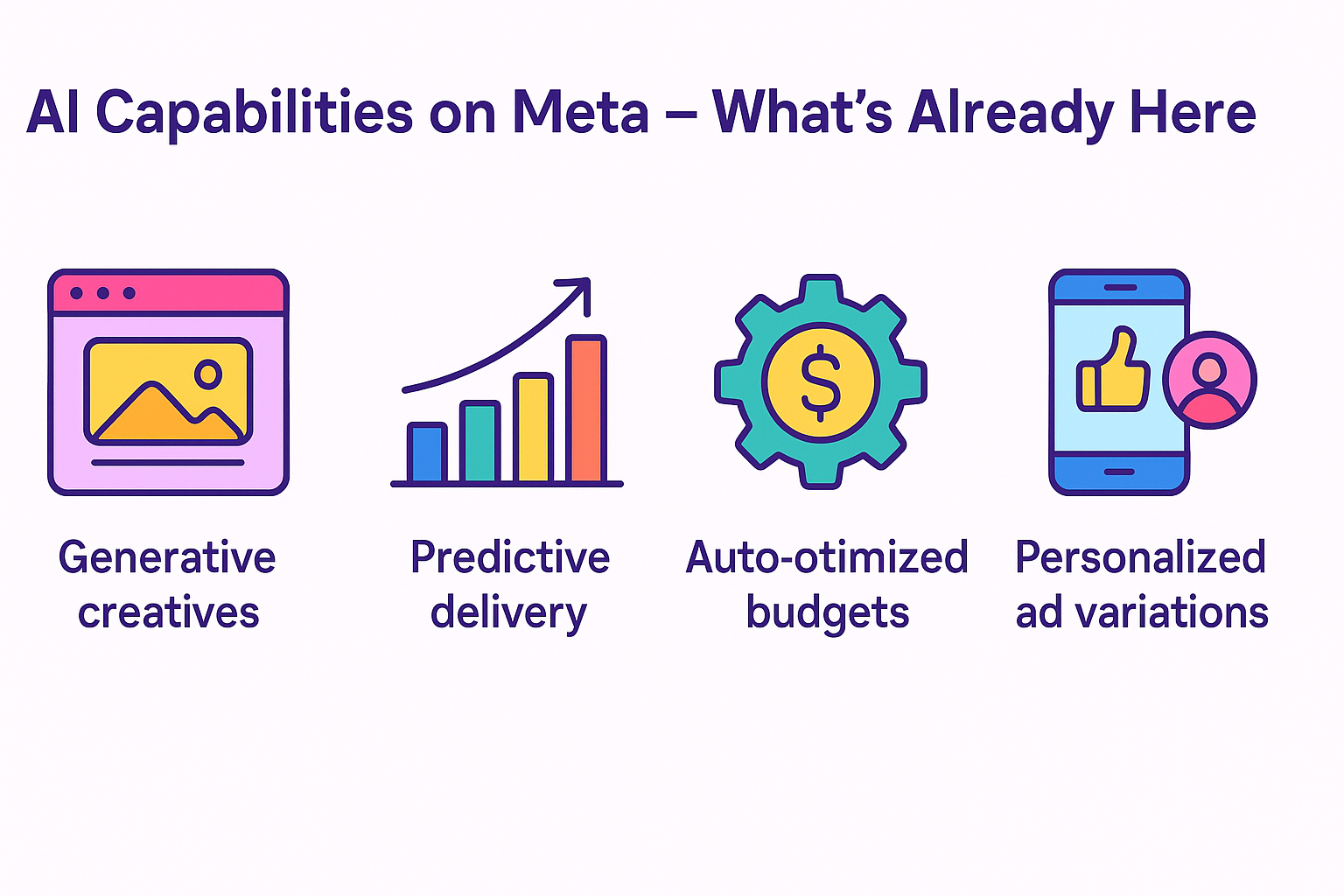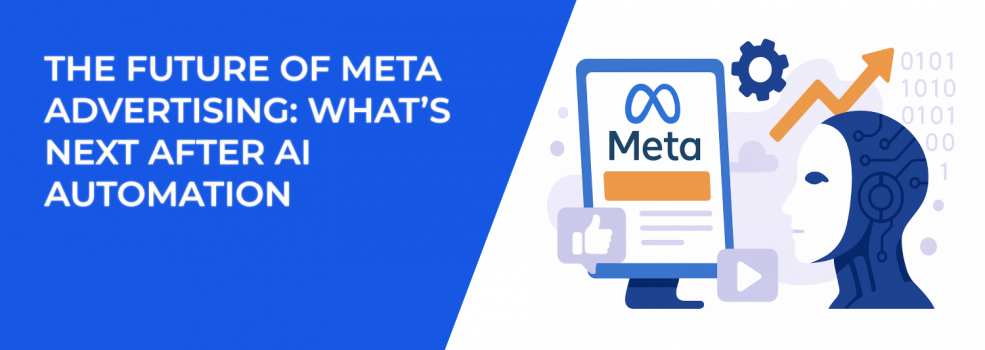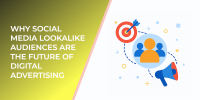In just a few years, Meta has transformed how ads are built and delivered. Today, automation isn’t just a feature — it’s the default. Meta’s AI can now generate copy, visuals, target audiences, and even adjust budgets dynamically. You feed the system a product page or a goal, and it builds the rest.
But now the real question emerges: What happens after everything gets automated?
If everyone uses the same AI tools, running ads with similar structures and logic, where does differentiation come from? What do marketers do when the system does the heavy lifting? And how do you stay competitive when creative, media and data are increasingly in the hands of a machine?
Let’s look into what’s next — and how you can prepare now.
1. From hands-on to high-level: the new role of advertisers
As Meta automates more of the ad workflow, marketers need to shift their focus. You’re no longer tweaking headlines or picking placements by hand. Instead, you’re shaping broader strategic inputs — the assets, brand tone, and goals that the system interprets.

This doesn’t mean your work disappears. It means your job becomes more about guidance than execution.
You’ll need to:
-
Set clear, outcome-focused objectives — think value-based, not just clicks or impressions. If you're unclear on campaign types and optimization goals, this guide to Meta ad campaign objectives can help you choose the right ones.
-
Feed the system well-tagged assets — quality inputs give you quality results.
-
Monitor performance in a new way — not by testing every variable, but by understanding system trends and interpreting automated decisions.
As automation scales, your job becomes part strategist, part curator. And the better you get at shaping what the AI uses, the stronger your outcomes will be.
2. Automation isn’t the ceiling — it’s the floor
Meta’s roadmap suggests a future where AI handles nearly everything: creating visuals, writing copy, choosing audiences, optimising spend. That might sound futuristic, but much of it is already here.
The key shift to understand is this: automation is no longer a competitive advantage. It’s the starting point.
So how do you stand out in a sea of auto-generated ads?
Focus on areas the machine can’t fully replicate:
-
Brand storytelling — emotional connection still matters.
-
Strategic context — AI sees patterns, not vision.
-
Differentiated positioning — your edge comes from knowing your market better than your competitors.
-
Creative direction — AI can generate assets, but it doesn’t know your brand soul unless you teach it.
If you're using tools to generate your own creatives, this list of top AI generators for ad copy and visuals will help you stay ahead while maintaining quality.
As more advertisers lean on the same automation tools, your inputs — your ideas, your voice, your data — are what create the edge.
3. What’s already changing — and what’s coming fast
If you're still building campaigns manually, you’re probably behind. Meta’s tools are already evolving beyond basic automation. The platform is pushing toward fully generative ad creation: you’ll input a link or product name, and it’ll build text, images, videos, audiences and delivery logic without much human input.

More advanced formats are also becoming the norm. Advertisers are encouraged to shift from static images to short-form video, interactive units, and content that adapts to context.
Personalisation is ramping up as well. Instead of running one ad to many people, Meta now delivers different versions to different users based on location, activity, device, or even shopping intent.
If you’re not yet testing:
-
Generative video ad tools
-
Multi-version dynamic ads
-
Value-based targeting models
…it’s time to start. The advertisers who begin experimenting now will have a massive head start when these systems become the standard.
And if your ad set is delivering poorly or showing "may get zero" warnings, this article explains what it means and how to fix it.
4. What smart advertisers should be doing right now
So, what should you actually do today to get ready for the next wave?
Start with your creative inventory. Make sure you have clean, professional brand assets — not just one or two, but a whole bank of them. Think short videos, lifestyle photos, product close-ups, and high-res logos.
Then look at your customer data. The cleaner and more complete your audience insights are, the better Meta’s systems will perform. Feed the AI with rich information, and it can personalise more effectively.
Here’s a quick breakdown of practical moves:
-
Audit your creative assets — ensure you have content that’s reusable, editable, and optimized for different formats.
-
Organise your data inputs — make sure CRM, web behaviour, and purchase history can connect to Meta’s ad tools.
-
Set guardrails — build brand guidelines, define what your voice sounds like, and make sure any automation respects them.
If you’re struggling to build audience segments or constantly relying on guesswork, this step-by-step targeting guide can help solidify your approach.
5. Strategy questions you should be asking
This isn’t just a tech shift — it’s a mindset shift. As the day-to-day gets automated, your strategic decisions matter more. Here are some questions to bring into your next planning session:
-
What are we doing to make our brand memorable in a world of AI-generated sameness?
-
Do we have systems in place to monitor automated outputs for quality and alignment?
-
How well are we using our own customer data to influence campaigns?
-
What types of creatives are we underutilising — especially video or interactive formats?
-
Are we testing automation in parallel with human-led campaigns to compare results?
If you’re running campaigns that seem optimized but don’t convert, this troubleshooting guide on why Facebook ads fail may help you catch what automation is missing.
6. The risk of sameness — and how to avoid it
Here’s a danger nobody likes to talk about: when everyone uses the same tools, things start to look the same. And sameness kills performance.
If AI is generating similar headlines, similar visuals, and similar CTA structures, how do you break through?
The solution isn’t to reject automation — it’s to shape it. Think of AI as a very smart assistant. You’re still the creative director. If you give it boring inputs, you’ll get boring ads. But if you feed it something original, meaningful, bold — you’ll stand out.
That means investing in your brand voice, testing unusual angles, and sometimes pushing the system to try things it’s not “supposed” to do.
A little controlled chaos can go a long way.
7. Looking beyond Meta’s current tools
What happens when automation matures even more?
Expect new creative layers to emerge — from real-time ad environments in AR/VR spaces to predictive ads that trigger before users search. Meta may evolve into an ecosystem where all customer touchpoints — social, messaging, shopping — are linked in one automated, AI-driven funnel.
You might soon be working with:
-
Dynamic 3D creatives that shift based on the viewer’s actions
-
Predictive audience models that identify intent before clicks
-
Machine–human collaboration where you sketch a concept and the system builds it out in seconds
Need help staying ahead of Meta’s evolving targeting features? Start by brushing up on Facebook Ad Targeting 101 to future-proof your skillset.
Final thoughts: your edge comes before the click
The future of Meta advertising isn’t just about better tech — it’s about better thinking. Automation is a powerful tool, but it doesn’t know your brand, your audience, or your values unless you teach it.
Success will depend on what you bring to the table. Strong creative strategy. Smart data use. Brand clarity. And a willingness to guide the machine instead of being guided by it.
Because once automation becomes standard, the only thing left to optimise is you.

